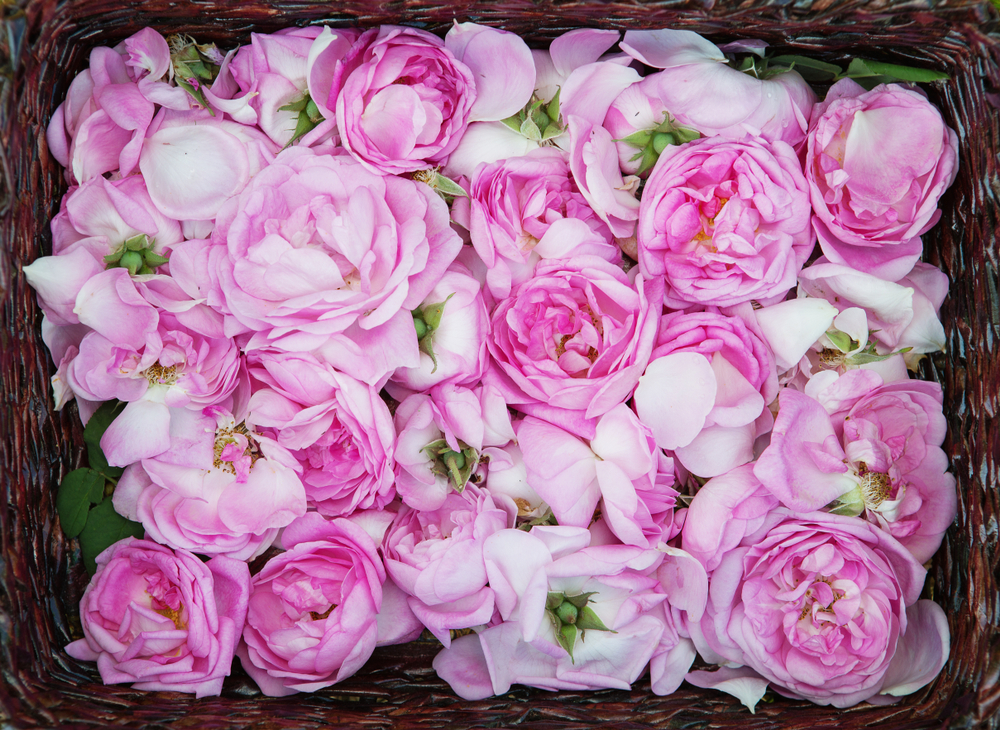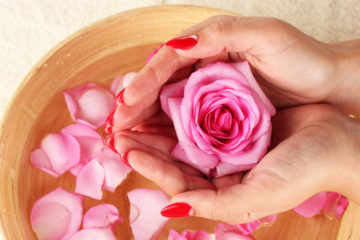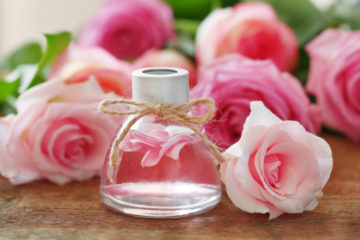Rose water is a product made by steeping rose petals in water. It can also be obtained as a by-product by distilling rose petals to produce rose oil. It is used in cosmetic products, medical drugs and to flavor foods. It is also used in religious and cultural events in some regions.
How to make rose water?
There are two main methods for making rose water. The first of these is roughly brewing in hot water, and the second is distillation.
The first method is quite simple in principle. Rose petals are heated but not boiling (90 degrees Celsius). °Dried or fresh rose petals can be used in this process. By straining the leaves, a product with a pleasant smell and the color of rose petals is obtained.
At home rose water This method may be preferred for production. However, it should not be forgotten that the resulting rose water will not have a very long shelf life, and the product should be used before it gets old.
In the distillation method, rose petals are distilled. This requires special equipment and technical knowledge to use it. Hydrosol, in other words “flower water”, can be obtained by distillation. Rose water can also be produced this way. This method is generally used in industrial production. Products obtained by distillation products is clearer and has a longer shelf life.
At home real rose water production
If you are going to make rose water at home, you can choose the first method that does not require any special equipment.
Ingredients
- 1/4 cup dried rose petals or a little more than half a cup fresh rose petals
- 5 cup water
Method
- Mix water and rose petals in a small saucepan.
- Cover it and turn on the heat. Once it starts to boil, reduce the heat to the lowest setting.
- Wait until the color of the rose petals lightens and becomes almost transparent. This process takes between 5 and 10 minutes. Then turn off the fire.
- Leave it to cool without opening the lid.
- After it cools down, strain the water using a strainer or cheesecloth.
- Pour the filtered water into a glass container or bottle, preferably dark colored and thoroughly cleaned.
If you keep it in the refrigerator, the rose water you prepare at home will last for a few weeks. If you do not put it in the refrigerator, it is recommended to use it within a few days.
Which rose petals should be used?
Whichever method you use, the rose petals you choose are very important. If you are going to use roses from your own garden, you can collect the petals early in the morning, when the flowers are most fragrant.
If you are going to buy roses, it is important to choose organic roses, without the use of chemicals in their production. The chemicals used during cultivation will also pass into the rose water you prepare.
You can also choose dry rose petals to make rose water.
The history of roses and rose water
Roses, with their pleasant scent and appearance, are very old in human history. Ancient Greeks, Romans and Phoenicians gave importance to rose production; He grew roses in large areas such as wheat, fruits and vegetables. According to fossil records, it is known that roses have been on earth for at least 35 million years, and according to historical records, they have been cultivated by humans for 5,000 years.
It is thought that its homeland is Central Asia. It was distributed to different parts of the world via trade routes. It has been used as a symbol of love, beauty and war from past to present.
Rose oil, a mixture of volatile essential oils obtained by distillation from crushed rose petals, has been produced since ancient times. During this process, rose water was also produced and evaluated. In other words, the history of rose water is at least as old as rose oil.
The history of producing fragrant flowers to produce perfume dates back to the Sasanian Empire. The process of obtaining rose water by distillation was developed by Persian and Arab chemists in the Middle Ages Islamic World.
Where is rose water used?
Rose water can be used in foods, cosmetics, medicines and for traditional/religious purposes.
Although local recipes vary, they are used in Turkish delight, Güllaç, pudding, bici bici dessert, ice cream and baklava in our country.
It is frequently used in desserts in Middle Eastern cuisine. Products such as nougat and candy are examples of this. In Iran, it is added to tea, ice cream and cookies in small amounts to give flavor. In India, it is used in many desserts, meals, milk and yoghurt drinks. Before vanilla became popular, European and American bakers widely used it as a vanilla substitute in many products.
Rose water is often used in perfumes due to its pleasant smell. It is also added to cosmetic products such as creams and face washes. Due to its anti-inflammatory properties, it can help treat Eczema and Rosacea.
Looking at historical sources, it is also seen that rose water was used in religious ceremonies in Islam, Hinduism and Christianity.


